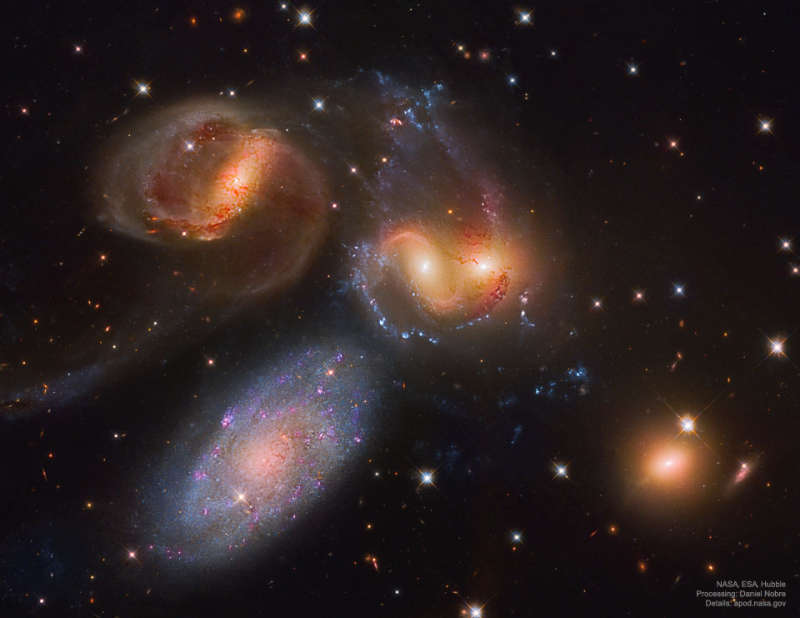Stephan's Quintet from Hubble

Explanation:
When did these big galaxies first begin to dance?
Really only four of the five of
Stephan's Quintet are locked in a cosmic tango of
repeated close encounters taking place some 300 million
light-years away.
The odd galaxy out is easy to spot in
this recently
reprocessed image by the
Hubble Space Telescope -- the
interacting galaxies, NGC 7319, 7318B, 7318A, and 7317 (left to right),
have a more dominant yellowish cast.
They also tend to have distorted
loops and
tails,
grown under the influence of
disruptive gravitational tides.
The mostly bluish galaxy, large NGC 7320 on the lower left, is in the foreground
at about 40 million light-years distant, and so is not part of the
interacting group.
Data and modeling indicate that NGC 7318B is a relatively new intruder.
A
recently-discovered halo of old red stars surrounding
Stephan's Quintet indicate that at least some of these
galaxies started tangling over a billion years.
Stephan's Quintet is visible with a moderate sized-telescope toward the constellation
of Winged Horse
(Pegasus).
Authors & editors:
Robert Nemiroff
(MTU) &
Jerry Bonnell
(USRA)
NASA Web Site Statements, Warnings,
and Disclaimers
NASA Official: Jay Norris.
Specific
rights apply.
A service of:
LHEA at
NASA /
GSFC
& Michigan Tech. U.

